IN A STRANGE TOWN.
Chapter 7. Nov 19 2021. Text by Kevin. # Comments
“That’s the problem with these young women. They don’t know how to follow their man. Always tryin’ to lead. I should know. Been divorced a few times and I’m a real bitch.” Terri marched from couple to couple, broking no disagreement.
“Now listen. Some of y’all may think you know the right way to do a country western two step. This is Texas. Been here six decades. It’s quick quick slow slow. And damn it, keep the soles of your shoes on the ground. Always move counter-clockwise. When my father opened this place, we always had a rule: no line dancing. Except Cotton Eye Joe. You’re supposed to dance close to your partner in a honky-tonk.”

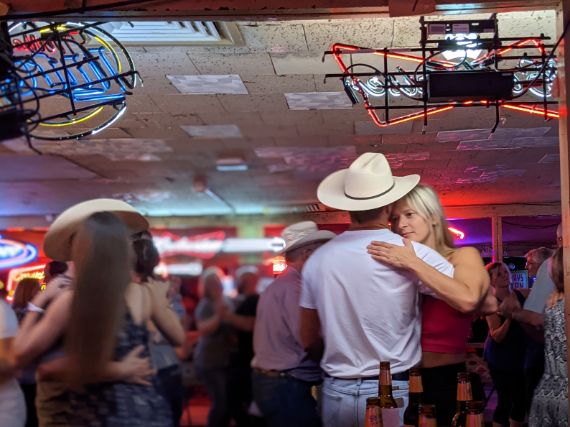
Saturday night in Austin, Texas. Late August. The daytime sun burns so hot that sweat mops onto your forehead in a permanent dew. Terri White, sixty years old but with the flexibility of someone half her age, is teaching two step lessons to tourists and teenagers before the regulars arrive and Dale Watson begins singing. Her family’s bar, the Broken Spoke, has been on the outskirts of the city for half a century, helping to break Willie Nelson, George Strait and the Dixie Chicks.
The Spoke still looks like it did when her father built the place. The ceilings are low, cheap panels shading card tables around the edge of a dancefloor, small stage at one end, surly bar at the other. The drinks are Lone Star or bourbon. Senior citizens are wearing cowboy boots and ten gallon hats. They can all cut a rug. Teenagers are dressed no differently: plaid shirts, jeans, boots for the boys; dresses and colorful boots for the girls. a number of them can dance as well. A fellow that must go six-foot-six, with a gut to match, ambles onto the dancefloor. He somehow moves like Gene Kelly when he gets there. This is the kind of place you might imagine only exists deep in the sticks, yet it’s a popular night out in the capital of Texas.
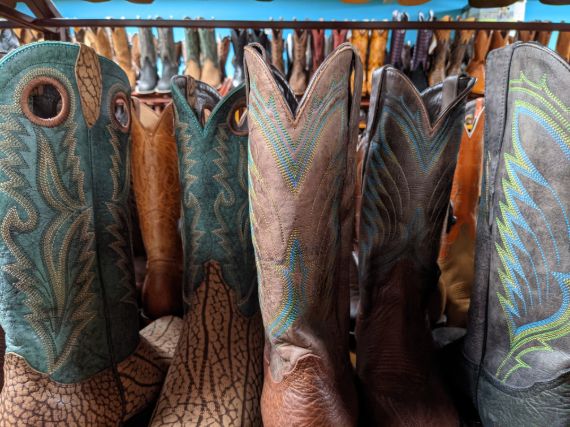
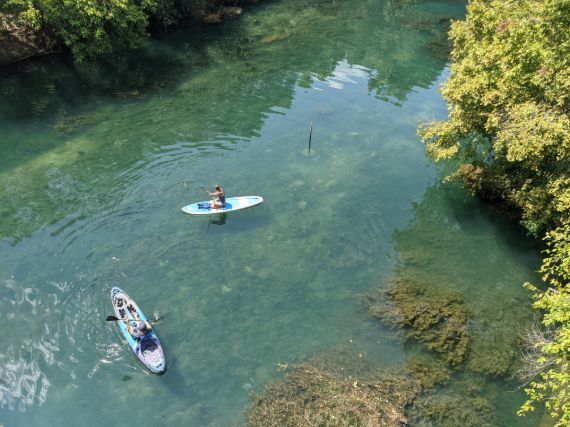
No state has more distinctive stereotypes. Wide open spaces, with empty 85-mile-an-hour roads. Vigilante justice. Megachurches. Tex-Mex burritos covered in cheese and beans, the way they do it in Jalisco. Live music. Loud people. Friday night lights. Cowboys. Boots. Big Hair. Blue Jeans. Holstered pistols. We crossed the state, from Austin to El Paso. These stereotypes are all exactly accurate. But another fact might be just as important: Texas is still home to the American Dream.
GAME NIGHT
The end of summer means the beginning of football season. Football is in fact the religion of Texas - everyone has their congregation, a leader whose sermons are followed, sins that must be forgiven, irrational leaps of faith that this year the promised land will arrive. After a year without fans, without the marching band, without the Cavalettes and the cheerleaders, the opening games of 2021 were anticipated like a country revival.
Lake Travis High is a massive campus in the Austin exurbs. The road there curls through the cliffs of the Colorado River, presaging the Hill Country further on. The fans at Cavalier Stadium are football evangelicals. They won the state championship in 2007, again in 2008, a third time in 2009, and then kept winning 2010, 2011 and 2016. Their quarterback, Baker Mayfield, won the Heisman in college and was the number one pick in the NFL draft. Many young men dream of playing on Sundays. At Lake Travis, it would be a surprise if a few boys on the team didn’t make it.
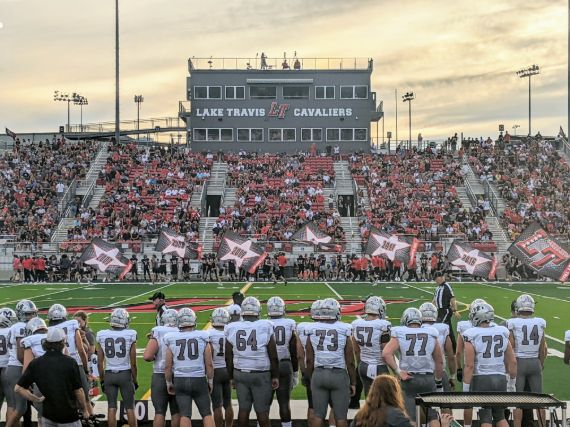
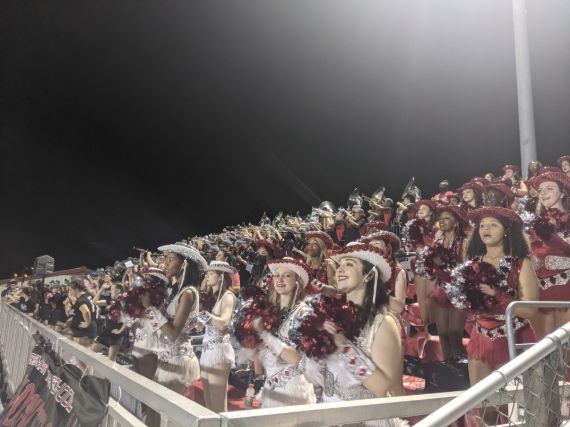
The opener was against Arlington Martin, ranked number 8 in the state, led by Ernest Cooper IV, a six-foot-four, 235-pound defensive lineman with wrought iron arms. He turned down Ohio State and Alabama to commit to Stanford next fall. The game was sold out, but the school’s online ticket site showed a few options left for Martin supporters, if only you had the password. A blonde mom with a haircut that added two inches gave us the code, after a small white lie about our relations. We found ourselves in the Away bleachers, right in front of Cooper’s family. The Home stands were completely full, the student section undulating raucously with each chant. “Over-rated!” “Bull-shit!” “L T H S!” Like any recent convert, we were fervent: those richy-rich Lake Travis so-and-sos had no chance against the gritty Warriors of Martin High.
A quick three-and-out defensive performance had our side feeling optimistic. The mood turned dour after a surgical march down the field capped by a touchdown by Lake Travis’ future Buckeye Caleb Burton. The students across the field restarted their chants in earnest, their band in rapture, their cheerleaders even more buoyant. On the next kickoff, Martin’s Javien Toviano, the 15th best junior recruit in America, found a crease and evened the score. We high-fived strangers, all assuring each other that we’d never had a crisis of faith anyway, that this turn of events was preordained.
Like any good church, Texas football is an event for the whole community. Both teams had marching bands a hundred students strong, a full pallet of cheerleaders, high-kicking dance teams of two denominations, to say nothing of the kids manning the concessions, helping in the radio and TV booths, taking notes for the coaches, and cheering in the stands. Older brothers, their physiques less rigid than in the glory days, support the teams alongside the moms and dads and grandparents. Football here gets too much attention, perhaps, but it unquestionably brings both the student body and the town together. On the field and in the stands, it isn’t clear at all who is rich and who is poor, who holds what political or religious belief. Football creates the flock. Whether the Warriors or Cavaliers won was almost beside the point.
THE AMERICAN DREAM BEGINS AT BUC-EE’S
The backroads traverse barbeque country south of Austin through New Braunfels, the fastest growing city in America. When we passed through on an early September afternoon, dozens of tubers were lazily floating down the spring-fed Comal River. The boomtown was once best known for inventing the summertime water park at Schlitterbahn. Now, it is known across Texas for having the world’s largest gas station. Buc-ee’s, suffice to say, could only exist in America, and then probably only south of the Red River.

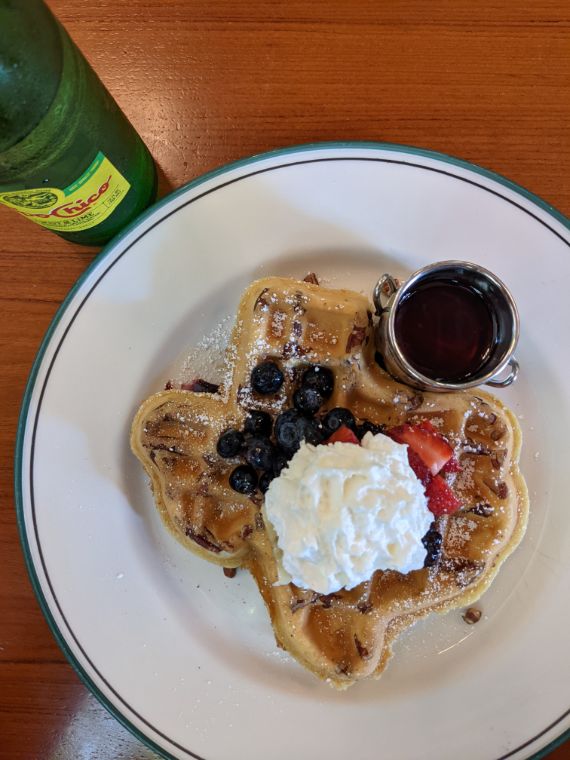
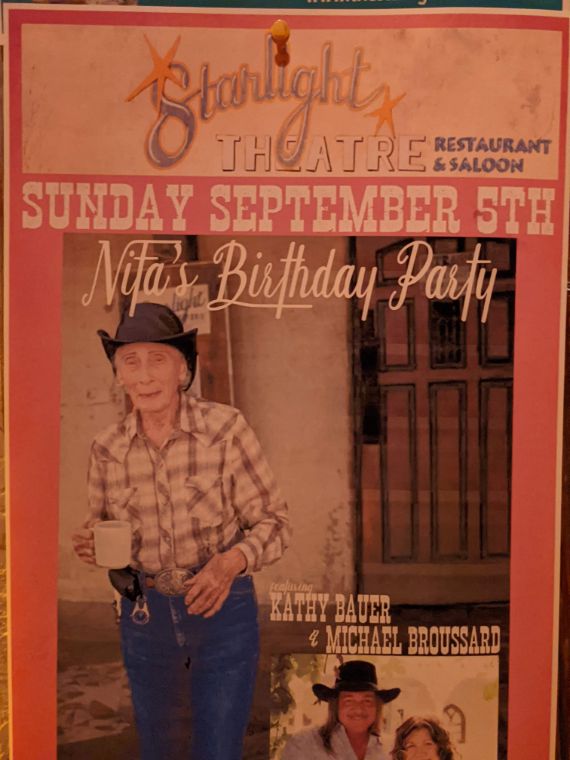
120 filling stations surround a 68,000 foot convenience store whose dozens of bathrooms have won an award as the Best in America (they were in fact spotless). A jerky bar sold dried meat from every animal you’ve ever heard of, and a few you haven’t, while a kindly grandma was slicing up peanut butter fudge. Buc-ee’s needs every one of its square feet, as the place was absolutely heaving. Good ol’ boys were loading up their Ford trucks with ice. Newly arrived Mexicans carrying out American flag hats for the whole family. Well-dressed, middle-aged black women, their twang thick, piling it high at the sandwich station. It would be political malpractice to run for office in America and not understand the crowd here, one that truly captures the preferences of today’s country.
New Braunfels, like Houston and San Antonio and Dallas and El Paso and the whole rest of the state, is a boomtown not just because of its meandering rivers and upscale Slim Jims. A sign at the door of Buc-ee’s noted they were hiring, for all positions. Starting wage? 17 bucks an hour, up to 25 for the late shifts. 401k and paid vacation were included. Across the street from Buc-ee’s was a billboard: new construction homes on the outskirts of the city, starting at $130,000. Is it any wonder that everyone is moving there?
ACROSS THE PECOS
Further south, the skyscrapers, Spanish missions and brooding cypress trees of San Antonio turn to empty ranchland. US 90 is the quiet route across the southern tier of Texas. It is the kind of road where each small town has a sign as you leave warning you of the distance until the next place you can fill up, Buc-ee’s 120 pumps become two, if you’re lucky. Some of these towns are slowly returning to dust as their mines shut down and farms dry out. But the ones that remain can be full of old-time booster’s pride.
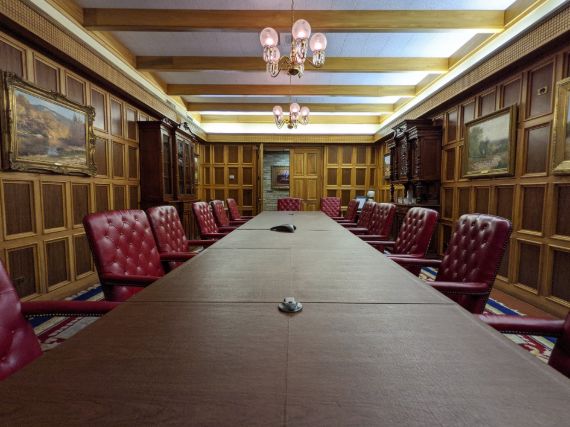
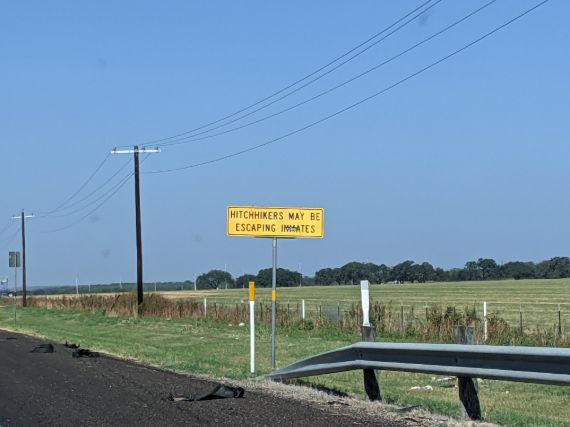
Uvalde is a town of 16,000 known mainly as the home of ranching millionaire and former Texas governor Dolph Briscoe, an honest man who rarely said a word publicly, and FDR’s famously crass Vice President John Nance Garner. “The vice presidency isn’t worth a bucket of warm piss,” he said, though the papers softened it to warm spit. Both men were once involved in the town’s First State Bank of Uvalde.
A community bank in small-town Texas may seem an odd destination for the tourist. We parked in First State’s lot and walked through a nondescript front door. On the other side, a decorated ceiling rose twenty feet, the walls in every direction covered by art. A blonde woman with a smile full of teeth asked if we needed any help. Laura Ramirez was the name, from the marketing department. We said we’d come because of the rumor that the bank improbably had a world-class collection of Rembrandt and Gainsborough and Remington, a collection of genteel English high society and Western landscapes. “Why, yes!,” she said. “Would you like me to show you around?”
In a town of boosters, she was the lead. We heard how incredible the Christmas decorations are, the whole town comes out, what a shame that last year they had to cancel. We were brought into “the Governor’s office”, left just as it was the day he died, lovely man, and his wife as well. Laura brought us back through the loans department to the dark-paneled conference room, a long wood table with an old-fashioned bar cart at the end, and a painting of a 19th century English fox hunter, for which they’d had an art historian who came all the way from England, a scholar of that very painter, who was shocked to find an unknown work on the walls of their small Texas bank. Despite our entreaties that we had a long drive to go, we were told we couldn’t miss the Garner museum, or the opera house, or the pizza at Broadway 830, which she would have joined us at if only her break was coming up. We heard that not only was “the Governor” just so nice, but so was her high school classmate Carrie Underwood, and wasn’t it so nice that we had come all the way from Canada just to see them, where she was sure things would be just like Degrassi High, her favorite show growing up. And this for complete walk-ins.
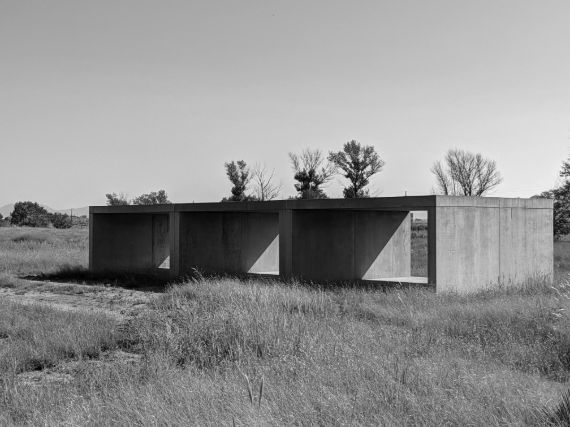

Leaving Uvalde and the border town of Del Rio, Texas becomes West Texas. A country of desolate canyons, carved by the Pecos and the Rio Grande, nearly emptied of people after the Comanche and Apache mastered the horse, driving the Spanish and their Native allies into mission compounds further east. Right after the Seminole Canyon and the high bridge over the Pecos River, the traditional boundary separating civilization from the desert, is the old courthouse of Phantly Roy Bean Jr. (what a name!), saloon-owner and “the only law west of the Pecos” in the late 1800s. Bean was a murderer, a fugitive, a wife-beater, and, incredibly, a duly appointed justice of the peace. His district was so remote at the time that his word was the law, and if you disagreed, you could just ride on out of town and dare Bean to come after you. Many did. Bean was, objectively, a bad person, but he was certainly a character. Today, the courthouse is in a ghost town on the Mexican border, kept up by two kindly state employees who won’t let you leave without a guidebook to each town you’ll pass through as you head west.
Roy Bean’s ghost town was isolated, yet the landscape becomes even wilder as you head west, the two lane highway unfurling in small canyons with no town bigger than a thousand folks. The route is one whose fame is its desolation. As Gertrude Stein wrote, in the United States there is more land where nobody is than where anybody is. Marathon, with rocking chairs on the old Gage Hotel, newly renovated into a dude destination, the term originally referring to folks from the city who spend their vacation living the ranch life. Alpine, incongruously green and cool due to its altitude. Marfa, of course, the home of Donald Judd’s minimalist sculpture factory and now a destination for artists who need a lot of space for not much money. Everyone in the Marfa scene, it seems, had just arrived from Los Angeles. If Austin is the big city that still wears its boots, and San Antonio the family-friendly boomtown, West Texas is where the cities haven’t been built yet, and may well never be. It is the kind of place where you can buy empty land half the size of Rhode Island and do what you like with it. There is no surprise that the people who live in a place like this enjoy their freedom.
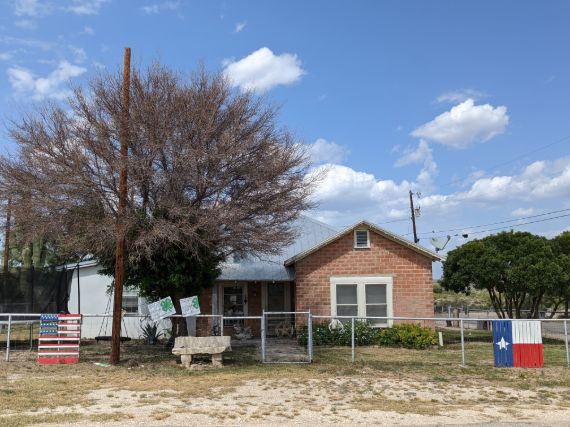
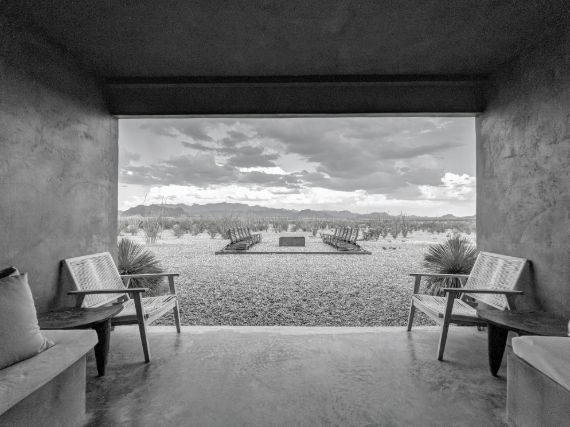
There was one last detour to make. We turned perpendicular to the sunset on state route 385, a road where we wouldn’t see a single other car our first day. This is the road to one of America’s least visited but most beautiful national parks, Big Bend, parked exactly in the map of Texas as its name implies. The valleys of the Chisos Mountains create microclimates for endemic plants and animals unsuited for the hot desert that surrounds the park. The Santa Elena and Boquillas canyons are so deep that it is hard to see where exactly the Rio Grande is slithering off to. We spent our days hiking where we could find shade and kayaking along the border (after being flipped by a rapid, I had to make an illegal foray on the Mexican bank to get back in the boat). At night, we stayed in a brutalist cube villa at a tiny boutique hotel, huge thunderstorms rolling overhead, their form echoed in the concrete. If West Texas is for those who like the quiet life, the area around Big Bend attracts those who like utter silence. In Lajitas, just west of the park, the locals dislike authority so much that their elected mayor is a goat named Clay Henry, who is paid in beer.
Texas is a foreign country, a two-steppin’, slant-throwin’, jerky-eatin’, hat-wearin’, big-talkin’ land where it feels like the future is still being made. It is a land which is not refined, in the sense of not being finished, yet also a place whose culture, that unique mix of Mexico, the Deep South, and the Frontier, could not be more clearly developed. In a world that slowly becomes more homogenous, more controlled, more orderly, Texas stands out. For its kooks, but also for its possibilities.
Text by Kevin
Terlingua, Texas, USA
November 19 2021
[All US Southwest Images]
[Southwest US by Video]
Tweet
Practical Details - Southwest USA
Hotels
The National Park Lodges are generally your best bet near a park. The Willow House Inn [$350] next to Big Bend is one of a few ultramodern brutalist places to stay now available in West Texas. The Driskill [$200] in Austin and St. Anthony [$200] in San Antonio are great grande dames with fantastic history. The Saint George [$320] in Marfa has a lovely pool, but is a bit overpriced for what it is.
Food
Texmex and New Mexico Mexican are your best bets in this region; green chili is worth trying while in New Mexico. Our best bite in the Southwest was the Cookie in a Cloud at the Jacob Lake Inn just north of the Grand Canyon: as one review says, "the Mormons do baked goods amazingly, caffeine less so."
Transport
National is by far the best car rental agency in the US, especially if you have status through a credit card. We had a high-end Infiniti with unlimited mileage for a month at $55/day. Gasoline varies enormously by state, but long distances between stations out west means you often need to fill up whenever you have a chance.